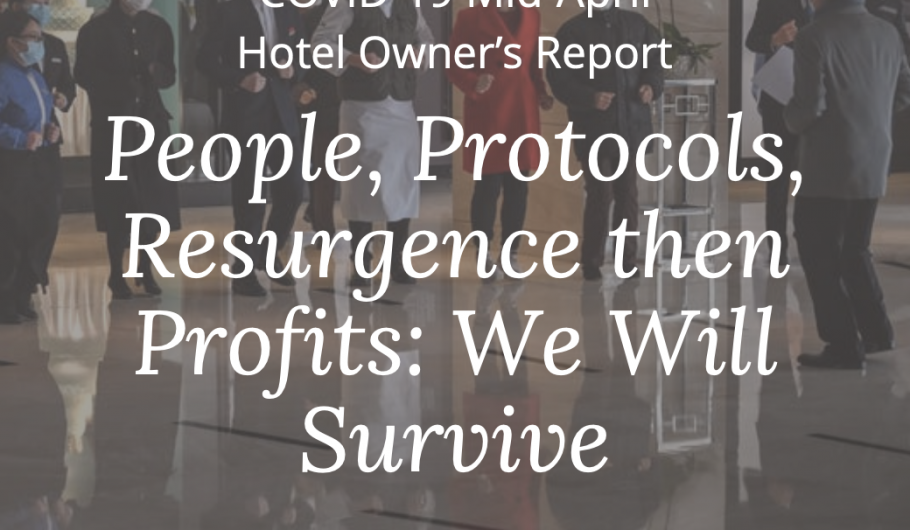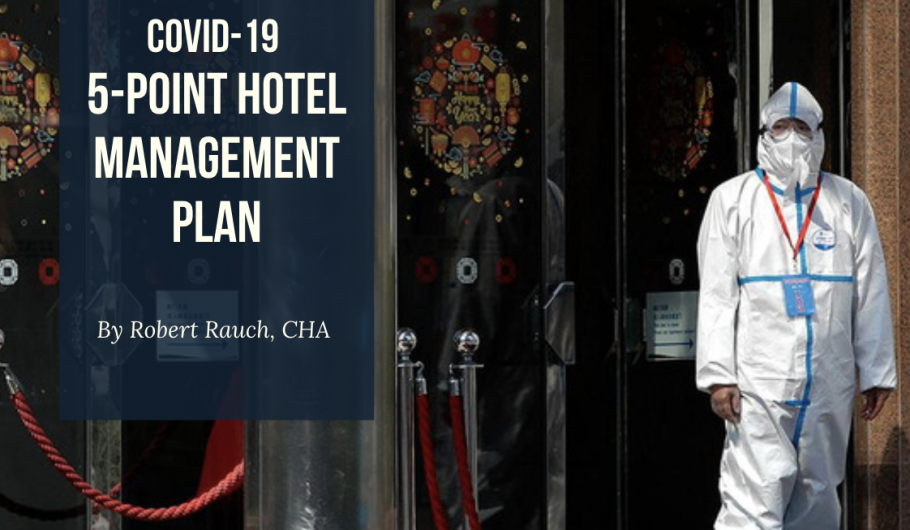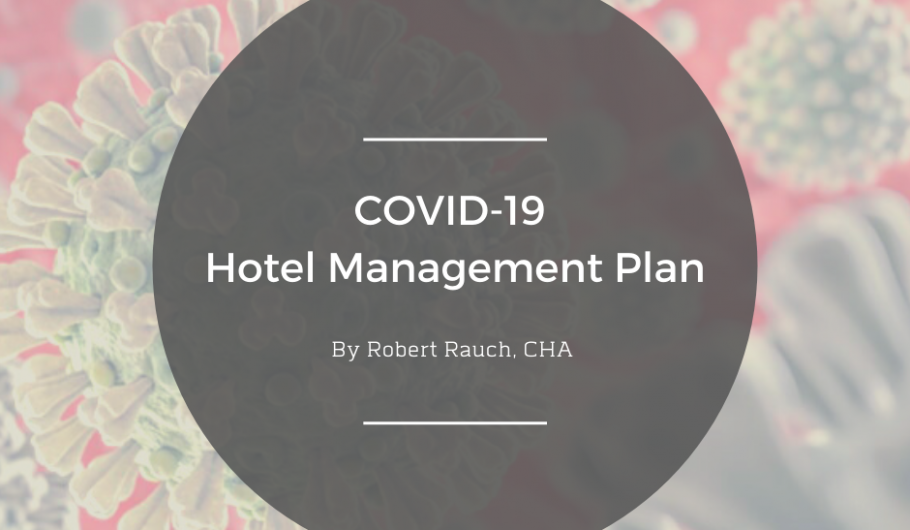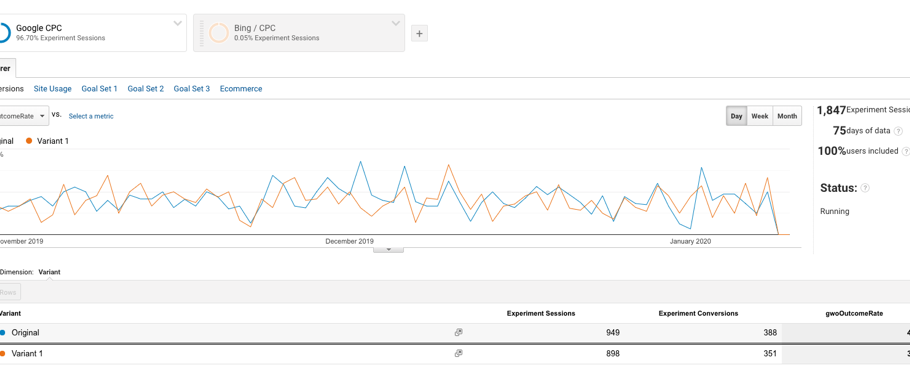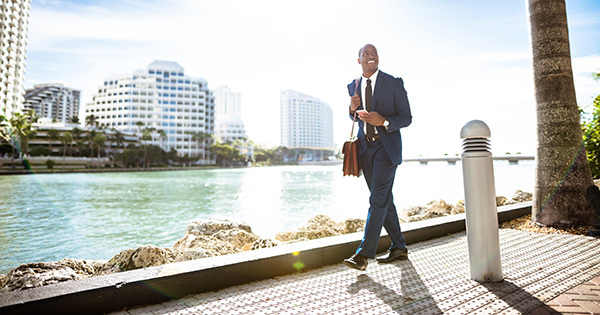People, Protocols, Resurgence then Profits: We Will Survive
COVID-19 Mid-April Hotel Owner’s Report
Labor is the largest expense and by far the most important component to succeed in hospitality. Without great employees, we are just another hotel. Today, most workers remain furloughed. By now, most owners are in discussions with banks on potential forbearance agreements or Paycheck Protection Plan (PPP) or both. Some may even have their PPP checks in hand! CMBS loans have been difficult if not impossible to navigate but traditional lenders are more flexible.
Franchise companies have generally provided some breaks for franchisees and they vary by brand. Guests are cancelling May and June bookings so new business seldom keeps up with cancellations. For those owners who are over leveraged, this is a time for a possible sale, albeit not a good time to optimize a return on investment. After all, it will likely be a slow recovery, with some hotel locations coming back much faster than others based on price point, distance from heavily populated markets where driving is easy and much more. Then there is the new supply that is coming in. This can be overwhelming for some hotels and markets to recover.
The PPP money is coming in this week for those who applied but getting that money forgiven requires 75% of it to be used for payroll and there are likely going to be fairly strict guidelines for proving where the dollars went. Use a separate checking account for those funds and naturally, if you are able to delay those funds, it might be easier to meet the 75% test as some hotels are either closed or running 10% occupancy. It is hard to hire your staff back unless you have significant maintenance, cleaning or other work to provide them. To delay receipt of your funding, you will need to wait for the next round of funding as the first $349B is pretty much gone.
Silver Lining
According to MMGY’s Travel Pulse, 68% of consumers feel safe in their cars and 40% of consumers feel safe in parks. The report seems to indicate that this might produce a desire for outdoor travel. Business travelers show more signs of confidence in safety than leisure travelers in venues like hotels, air travel, rail and events, while 49% of travelers that are 50 to 64 years of age show the least concern for their safety than any other age group, according to the Travel Pulse survey.
The good news is that travelers are still looking into travel this summer and fall and early 2021. In the meantime, for those who can navigate these next two or three months, there are things to do that will greatly benefit operations when we get to the other side:
Preventive Maintenance
Deep cleaning, checking systems, reviewing all checklists and touching up paint, case goods, tubs and everything the guest sees in particular will be good for those who have had busy hotels where you could not get into rooms.
How to market to get to the other side
We all need to change our sales and marketing approach. Contacting hospitals and all health care providers is paramount. Don’t listen to the big companies who say “do not promote” during these times. Agree, it is bad to promote without a clear message that safety, sanitation and “doing the right thing” is of critical importance to you and your team. But there are many opportunities to contact senior housing, apartments, RV parks, transportation companies and many more and load up with online marketing. Content is King and only eclipsed by Cash is King today.
How to save to get to the other side
Negotiate better pricing for all your purchases, compare vendors, especially if your current vendor is not taking care of you during this very difficult period. Watch all expenses by closing wings, floors and all non-essential activities. Any supplier can be helpful in deferring expenses, cutting out some services and more. When staffing up occurs, now is a good time to rethink who we really need. I for one believe we need to flatten organizations, allowing the top management team more direct contact with our guests. This will bring them back and improve the poor training that has been occurring, largely because middle managers do not have the seasoning to train.
Conclusion
While this shock to the market has hit us hard, we were running out of time with this formerly-booming economy anyway. I had predicted a recession in Q1 of 2021 due to the length of the strong economy so now, rather than a mild but lengthy recession next year, we have a ridiculously deep, hopefully shorter recession caused by an external event – an event that was required if something was going to knock down this economy in an election year.
It is hard to predict how we will look from a RevPAR perspective this year, but STR (Jan Freitag has been doing a weekly podcast that is excellent) has been doing a great job of modeling RevPAR growth from Q1 2020 through the end of the year. If Q1 ended at about 30% below 2019, Q2 is projected to be down 80% and Q3 60% with some degree of normalization by Q4. To a safe and as quick as possible recovery!
Is working from home a skill that will benefit the U.S. economy?
Bob Rauch, R.A. Rauch & Associates
YES: Ability to work remotely will improve the economy in the long run, but in the short run it is bumpy. Near term, offices will shrink in size a bit as some workers share desks, oil prices might decline and teams will get used to more remote employees. Ultimately, real estate uses might have an adjustment and states will have to be wary of taxes when more employees work in a different state.
Read full article by Phillip Molnar of The San Diego Union Tribune here.
Even before coronavirus, was the stock market overvalued?
Bob Rauch, R.A. Rauch & Associates
NO: The stock market was overvalued before the “dot.com” and housing bubbles of 2000 and 2008. Today’s stock market was near an all-time high due to a combination of consumer confidence, employment and wage growth, low interest rates and an election year bump. The only thing that could take down this market would be an unrelated event like coronavirus. It will be over in 30 days and everyone will be happy again.
Read full article by Phillip Molnar here.
COVID-19 5-Point Hotel Management Plan
Last week I talked about preserving cash, perhaps the most critical factor to make it through this. But there is much more – the human side is near and dear to my heart, so here is my 5-Point Plan for recovery, not from COVID-19, but from the economic wounds it is causing.
Human Side
The most difficult part of this is the layoff of staff. They must fully understand that there will be schedule reductions and furloughs or layoffs. If we are able to keep their insurance intact with hopes that they can return to work relatively soon, they will be grateful. There are so many resources for them from the government and from us in the form of information. We are considering a gift card that our team members can use while navigating this crisis. The single most critical point I’d like to make here is compassion. Stay in touch with your team and be honest in your assessment. On March 13, I told all our team members at each hotel that I thought April 30 would be a good estimate of when we might be able to bring them back. We made sure each employee was counseled by Human Resources about their available Paid Time Off and any hours that we might be able to give them.
Preserve Cash
The most critical first step, if not already taken is to project our expenses for the next 90 days. This requires contacting the lender and asking for some type of relief. A forbearance letter requesting a 90-day period of no payments is a good first step and additional requests for relaxed debt-service coverage ratios and others are logical as well. Ensure that your request to the lender includes your commitment to the hotel, a new forecast for the balance of 2020 and history of your guest service scores, quality assurance reviews and a reminder of your timely payment record. If you have a CMBS loan, you are not likely to be successful with forbearance but should be able to get relaxed terms on use of reserve and other funds. Principal and interest must be paid this month until such time that there is government intervention on this.
Most franchise companies will be open to some type of relief and we will need that. IHG, Hilton and Marriott have all offered some sort of relief on fees and services and some have offered deferral of fees until July. Federal, state and city officials, vendors, utility companies and all in-house contracts should be contacted for relief. That includes landscaping and trash removal, copiers and any services. Prioritizing vendor payments must be done to preserve cash.
Identify Government Resources for COVID-19
The next opportunity for hotel owners to get some relief starts tomorrow with the opportunity to file an application for the Payroll Protection Plan (PPP). This is a loan to help pay operating expenses and it will be forgiven if 75% of the loan is used for payroll.
The loan size is generally measured by taking the total payroll including payroll taxes and benefits for the past 12 months (I believe lenders will allow total 2019 payroll) and divide it by 12 and multiply it by 2.5 to get to 2.5 times your average payroll. A payroll of $1.2M would be $100,000 per month average times 2.5 or $250,000 for the hotel.
I highly recommend you do this—brokers may be used and they are compensated by the federal government as part of this CARES Act but you may apply directly using your preferred lender—just check with them to ensure they are participating.
Apply as a Single Purpose Entity and use the funds for your mortgage, payroll or utilities, again, 75% must be for payroll if you’d like it to be forgiven. The latest word I heard is that if you do not qualify for forgiveness, the interest rate might be as low as .5% or as high as 4%.
Another loan opportunity is the Economic Injury Disaster Loan (EIDL) – this is up to $2 million dollars and includes a cash advance of $10,000 that is not repaid, even if your loan application gets denied. After that free $10,000, the loan appears set to come in at 3.25% but that is a moving target not to exceed 4% interest. The details of how you might qualify for both loans needs further clarification but apply when this becomes available. There are tax credits to look into as well.
Demand Generation
Reach out to local community organizations to see what is going on in the community. While we may be told that social media should go silent, I say engage! We are part of the fabric of our community. Contact churches and other non-profits, local health care providers and hospitals to see if there are partnership opportunities. Contact universities for students unable to stay in dorms and those working remotely to see if they would like the convenience of a room that provides WiFi, no clutter, a desk, a place to lay down and rest, a fitness room, pool, food, beverage, adult beverage, basic retail services and in some cases much more. The market will start coming back in at levels that only feel good because of where we are today.
Operational Efficiencies, Cost Cutting and Organizational Flattening
We can reduce the size of our hotels by closing off a wing or floor, saving on utility consumption, staff services and supplies and completing maintenance work that is difficult to do when we are full. Housekeeping services can be offered to guests on a request-only basis.
We can re-evaluate our cost of guest acquisition and start going after guests who are a better fit for our hotels. Part of revenue management is finding the right guest – once we do that, we need to find the best channel to use. It’s not the average rate, rather it is the net profit that is important. This industry has become much more of a science and while it will always be an art, digital marketing, artificial intelligence and a flattening of the organization will allow us a quick recovery.
Let’s get our managers back out front where they are now and keep them there!
At the end of the day, this is about compassion for employees and surviving the worst economic challenge many of us will ever face together. We will survive and must remember those who are victims of this virus. May our luck turn for the better and soon!
COVID-19 Hotel Management Plan
A response and solution to surviving the rugged economic downfall.
As a seasoned hotelier of over 40 years, I have worked through five previous recessions, ergo, I feel qualified to provide insights into what we should do as we face the sixth recession since the 1970s. If we have not preserved cash, the financial portion of this brief article is perhaps the most critical. The human side is near and dear to my heart, but the financial side weighs heavily. Here is my suggested plan for recovery, not from COVID-19, but from the economic wounds it is causing.
Financial Relief
The most critical first step, if not already taken is to project our expenses for the next 90 days. This requires contacting the lender and asking for some type of relief. A forbearance letter requesting a 90-day period of no payments is a good first step and additional requests for relaxed debt-service coverage ratios and others are logical as well. Ensure that your request to the lender includes your commitment to the hotel, a new forecast for the balance of 2020 and history of your guest service scores, quality assurance reviews and a reminder of your timely payment record.
Most franchise companies will be open to some type of relief and we will need that. Federal, state and city officials will be important calls as relief will come from many government sources. Preserving cash is so critical that even if you just received 30 days relief from Transient Occupancy Tax, it will make your cash flow improve. Vendors can be very forgiving if we have been loyal and current with bills and might be able to provide services at a discount if you continue to use them now. Utility services have not been tested in this environment, but it is worth a try. All in-house contracts should be reviewed. Landscaping and trash removal, copiers and any services must be scrutinized. We must prioritize vendor payments and reach out to national providers for deferred payments.
The most difficult part of this is the layoff of staff. They must fully understand that there will be schedule reductions and furloughs or layoffs. If we are able to keep their insurance intact with hopes that they can return to work relatively soon, they will be grateful. There are so many resources for them from the government and from us in the form of information. We are considering a gift card that our team members can use while navigating this crisis.
Demand Generation
Reach out to local community organizations to see what is going on in the community. While we may be told that social media should go silent, I say engage! We are part of the fabric of our community. When we posted on Facebook that we had suites at a reasonable rate for those who wanted to self-isolate, we got questions about whether or not our fitness rooms were open, how we were serving food and more. Answer honestly – in our case, we allow one guest at a time to reserve the fitness room for 45 minutes. We sanitize it after every use and hence can get one guest in per hour. For buffet food, we do not allow guests to touch anything. Our employees will serve what our guests want.
Contact churches and other non-profits, local care providers to see if there are partnership opportunities. Contact universities for students unable to stay in dorms and those working remotely to see if they would like the convenience of a room that provides WiFi, no clutter, a desk, a place to lay down and rest, a fitness room, pool, food, beverage, adult beverage, basic retail services and in some cases much more. The market will start coming back in mid-April and May at levels that only feel good because of where we are today.
Operational Efficiencies and Alternatives
We can reduce the size of our hotels by closing off a wing or floor, saving on utility consumption, staff services and supplies and completing maintenance work that is difficult to do when we are full. Housekeeping services can be offered to guests on a request-only basis. Contacting guests in advance to ensure that they are still planning to travel is prudent. If all else fails, there will be a need for rooms for those who test positive for COVID-19, but are not ill, those who have mild cases and if that market is not appealing, there are the homeless who really need shelter before the weather warms up.
At the end of the day, this is about compassion for employees and surviving the worst economic challenge many of us will ever face together. We will survive and must remember those who are victims of this virus. May our luck turn for the better and soon!
By Robert A. Rauch
rauch@hotelguru.com
Using Google Analytics to Create a Data Incentivized Customer Journey
As we attempt to navigate the complexity of Google Analytics to better understand our website, there are a few data points we should look at before creating our marketing strategy. The rich data we discover will enable us to create a custom user journey path and help personalize our website, ads, and content to improve all aspects of our 2020 digital marketing plan.
Target Markets
If you haven’t identified your geographical target markets, or you’re looking to fine tune your current strategy, consider using the Audience > Geo-Location report to identify who is coming to your site compared to who brings in the most revenue. You may think Arizona is your best market with the largest amount of traffic and transactions, but take a closer look and you’ll find that California brings in more revenue! With this data, you can decide if you want to introduce new CA users to your funnel, or work on improving your conversion rates for AZ.

*Tip – If you’re looking to implement a plan for Q1, ensure you’re analyzing January-March of the previous year to see who is likely to book again this year.
Website Engagement
Once you discover California as the bulk of your revenue, you may want to break that down further to see how these users interact on your website. Segments, which are about the most simplistic yet complex aspect of Google Analytics, will allow you to view multiple custom audiences on ALL pages of Google Analytics, at the same time. As you look at your favorite views in GA, change from the default “All Users” to view to only show a specific audience, user location, device, common user page paths, etc. For example, by using the geolocation view, you can create segments for users in San Francisco compared to all other Californians and compare acquisition, revenue, bounce rate, etc.

*Tip – try using segments in your E-Commerce product reports to see if different users book different packages and room types!
Personalized Ads
Once you’ve identified the locations you want to prioritize, sending the same ad won’t benefit them if they are looking at different seasons for their travel. When you create new audiences, you can publish them to your Google Ads account for remarketing. Consider adding custom dimensions with booking engine data to identify which month the user is looking to book. With that data, you can create ads for users searching for stay dates in March, and send them personalized offers such as spring break escapes.

*Tip – Once you have custom dimension data, use it to analyze the booking windows and seasonality for different geo locations. For example, publish content for spring break activities and send them to local Texans during their 14 day booking window.
Packages & Promotions
Whether your goal is revenue, bookings, or a higher share of direct bookings, understanding what guests are booking will play a huge part in your website and ad content. For the data lovers out there, Pivot Tables are an extremely valuable function when looking to add a 3rd dimension to your data set. You can utilize this table in your e-commerce report to identify which room types and packages are contributing to the most bookings and room nights.
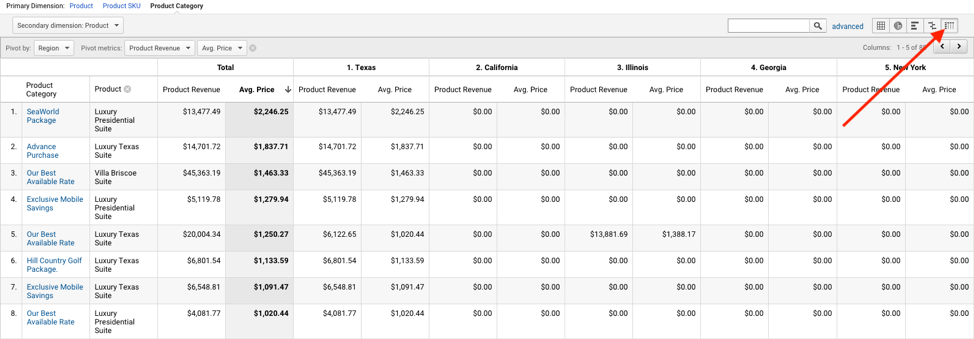
Taking a closer look, I’d try to sell more SeaWorld Packages in that Luxury Presidential Suite…
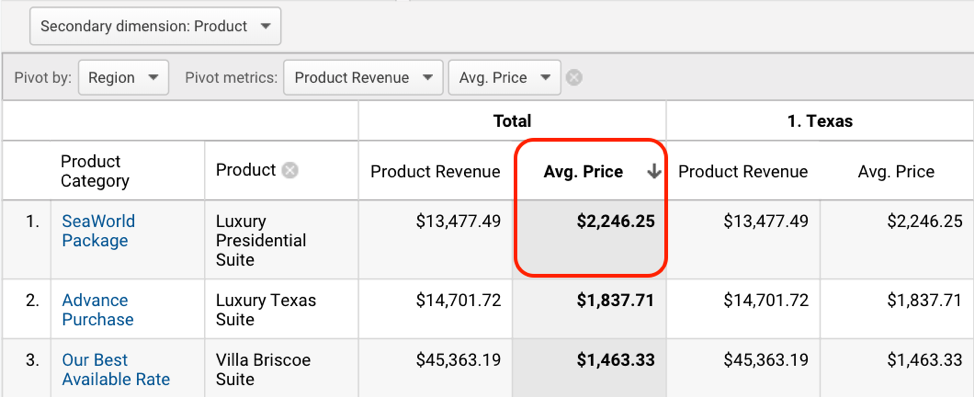
*Tip – try adding a Google Analytics segment to your pivot table to get a FOURTH dimension!
Landing Page
With the right targeting settings, personalized content and appropriate offer selection, you’re well on your way to a successful ad campaign. As an advertiser, you won’t want to stop there to assume the transaction is also on it’s way. A compelling landing page with appropriate content is key to driving the user to complete the action you’re hoping for. Through experimental solutions such as Google Optimize, you can A/B test different variants of your page such as call to actions, page paths, content and more. The Behavior > Experiments portion of Google Analytics will enable you to analyze your variants and decide which page exceeded your KPIs!
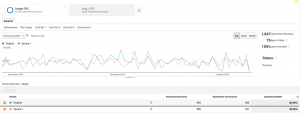
*Tip – Create an experiment for users coming from a specific location or ads campaign with a unique and personalized landing page experience.
Once you grasp the image of your ideal consumer and comprehend how and why they convert, you’ll reveal your secret weapon to grow your revenue in 2020! Your user journey approach will be personalized to as many audiences as you choose, and you’ll be that much closer to increasing your annual KPIs. For help on analyzing and creating a data incentivized customer journey, contact Screen Pilot to get started on your enhanced marketing plan.
By Meredith Rauch
Paid Search Strategy Manager, Screen Pilot
Bleisure Marketing 101
What is it?
We’ve all heard it – it’s the buzzword circling the hospitality industry these last few years – “Bleisure” Travel.
Bleisure is a blend of both business travel and leisure travel. Meaning, guests who are traveling for a business trip will then extend the same trip and hotel stay into a leisure trip, potentially inviting their family and friends to join them for a portion of, or the duration of, the hotel booking.
Benefits of “Bleisure” as a traveler:
- More deeply experience the place that you were sent to
- Connect with family and/or friends in a new place
- Airfare included
- Lodging included (for the duration of the business stay)
- Lower tourist activity during weekday stays
According to Expedia, there has been a 40% increase in bleisure travel since 2016.
Travelers, on average, are adding on 2-3 days of leisure travel on top of a business trip, resulting in more revenue for a hotel and filled inventory on days where occupancy slows down. Top destinations for entertainment and activities are the main reasons travelers choose to stay longer in certain locations.
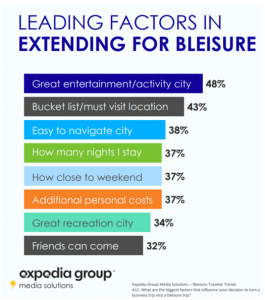
Source: https://info.advertising.expedia.com/bleisure-travel-trends
How should my hotel market to “Bleisure” travelers?
Don’t overthink it. Marketing to bleisure travelers can mimic your normal marketing efforts.
Similar to different marketing strategies for “fly markets” and “drive markets”, bleisure should include the same objectives and tactics. Channels to prioritize include website (content and offers), paid search, organic social media, and paid social media.
- Website Content: write blogs geared towards top attractions, dining, and experiences in your city
- Website Offers: design packages specific to extending your trip for exclusive rates or upgrades. You can market these packages through display ads, targeting users based on their interests, website engagement, and placements.
- Social Engagement: have the ability to share upcoming events, attractions, and experiences in order to build an itinerary for your extended stay.
We know not every night of the week is a peak night, so capitalize on bleisure traveler deals/offers to help fill occupancy and drive more revenue during softer times of the week.
Bleisure travel is a top hospitality marketing trend – one that is sure to continue growing.
Stay current in the changing world of hospitality, and reach out to Screen Pilot if you want assistance reaching your top markets!
By Meredith Rauch and Mandy Muszynski
August 19, 2019
Original Article:
Automation – Salesperson Friend or Foe?
In my never ending quest to help salespeople automate whatever they can (because used wisely, it is always a friend), I thought I should bring up the concept of lead nurturing.
Prospecting emails is one of the most popular topics in my training class, Influencer Sales. I cover some key points around how influencers prospect and I think people like it so much because first, everyone hates making telephone prospecting calls and this seems much easier. But second, this is much more prospect friendly. People prefer emails to phone calls today and crafted correctly, you can get a pretty good response rate – higher generally than phone calls.
But there is a science to it. As with everything that touches our prospects or customers, there needs to be some value added. Each prospecting email needs to have a strong and compelling headline/subject line, a few short sentences that quickly explain why you are writing and what results you can get for them. It closes with a simple call to action – most often just asking, are you the right person for me to be contacting? And then the value add – here is an article/video/how to that will likely be of interest to you.
As effective as a single prospecting email can be, think of lead nurturing as prospecting on steroids.
On average, you need to reach out to a prospect between 7 – 12 times. Seriously. Who has time for that? And – this is often true even for customers who reach out to you first. How many times have you gotten an inquiry, responded back pretty quickly and then never heard back again? If you are like most salespeople, you probably give up after one or two follow ups. However, the research is pretty clear – if you follow up more frequently, you increase your odds of getting a response. The magic number seems to be 5 for the customer who has reached out to you. Again, who has the time for that?
Lead nurturing is your solution. While there are several kinds of nurturing campaigns, the type I am talking about here is for your cold prospects, or a similar campaign can also be set up for those who reach out to you.
You have to do a little bit of upfront work. I have created a checklist that helps me think through the series of information pieces I want to share with prospects, and then I spend about 45 minutes filling in the blanks and crafting 5-7 emails.
I think about my buyer persona – the unique needs of my potential prospect. What is it about my product or service that might be appealing to them? The beginning of my checklist looks like this:

In this example, let’s say that I want to target small meeting planners. I will use my own list of prospects that work in offices within a five mile radius of my property. The typical title of this list includes office managers, HR managers, Executive assistants. I think through what their challenges might be, how my property/hotel might help and what digital resources I have to share.
Next I map out the touch points. Since this is a fairly cold outreach, I want to plan for 7 touch points. One habit I have gotten into is to look at the prospect’s LinkedIn profile and ask to connect as my first touchpoint. That gives me a little name recognition as everyone likes to see who is looking at their profile.
My subject lines for prospecting nurturing campaigns typically follow a similar process. I start out with a curiosity – inspired subject line. My first call to action is always – are you the right person? If not can you tell me who is. After that, my second email is usually a FOMO – appealing to everyone’s fear of missing out on something. Three, Four and Five are usually around a typical pain point my prospects might have – things like no more boring meetings, a hassle free experience, an event that promises to engage, etc. Finally, I will do a social proof subject line – something like, TripAdvisor says we are the best choice for X, or some other indicator that we are the preferred choice. The 7th email is always the same – the goodbye.
My next step is to think about the value adds and what my existing digital assets include. What do I mean by this? What great articles or videos do you have to share with your target audience? Infographics? Quizzes? Checklists? What tools or information do you have access to that will make it easier for this target audience to do business with you? Then I try to match those assets with one of the emails.
I write each of the subject lines first, then the value add, then the call to action. Once you have those sketched out, all you are really missing is the one or two lines about a single result – or benefit that your prospect will get from working with you.
The last step is to put everything together and craft all 7 emails. It sounds much more time consuming than it actually is! The first time will be a challenge and can take you 45 minutes to an hour if you can focus! But once you put the first one together, the rest are a piece a cake. Here is a sample of a typical first email:
All of the emails are brief, and follow the same pattern. Strong subject – all about them, just one result or benefit of your property, call to action, value add.
The key now is to schedule these emails to go our automatically, with no ongoing effort on your part. You have put in the work, you wrote the emails, now let the system do the heavy lifting.
Today, workflow automations are available in most CRMs. And if your CRM doesn’t have one, there are only about 100 apps that can help you.
One of my favorites is Snov.io This is an app that allows you to try it for free, but then the cost is around $29 a month. The reason I like it so much is that it allows me to continually add people to my campaign. As people sign up on my website, or meet me at a trade show, I can just add them in and within a day or two, the first email will go out and they will go through the whole series with no more effort from me.
You can schedule your emails based on time or activity. For time, you can say, every 3 days, send out the next email. For activity – this is my preferred method – you can tell the system, if my prospect opens this email, wait 3 days and send the next one. If they don’t open my email (or click on the link), then you can send them down a different path. Here is a sample of what one of my campaign looks like in Snov.io.

In the end, you will have a few different buckets. One bucket will be the prospects who never opened any of your emails (I will usually only send 2-3 if they don’t open). These people probably don’t have a need for you.
The second bucket will be those who opened some of your emails. Those people have a mild interest and I will try to learn what appealed to them (by looking at what emails they opened) and set them up on another campaign.
The third bucket will be the people who reach out to you directly after receiving one, two, three or maybe five emails. Those are my favorites because they are usually ready to book now.
The final bucket will be the people who opened most or all of your emails, but never reached out to you. If these people are opening your emails, they likely have an interest in your product, but don’t have a current need. I will usually pick up the phone and call those people to find out timing. Or sometimes I might just add them into another series.
And that is lead nurturing! If it sounds a little overwhelming and you would like some additional help, I offer a webinar on this topic a few times a year. I share my whole checklist and mapping with you, as well as seven sample emails to get you started.
Click here for more information and to register: bit.ly/leadnurturer/
Once you get it down, you will discover all sorts of campaigns you can create – beyond just prospecting. Again, invest a little time up front and then let the system bring the business to you! Past customers, lost business, new neighbors, new markets. Honestly, automation can be your friend!
By Holly Zoba
Owner of Influencer Sales
December 26, 2019
Original Article:
https://influencer-sales.com/sales/automation-salesperson-friend-or-foe/
4 Tips for generating creative, targeted strategies for 2020
The 5 Rs of Revenue Management
Most hotels are seasonal, but each market has very different needs in each quarter. For example, Minneapolis is not busy in Q1, while Phoenix is in high season. However, it is crucial for Revenue Managers to look at the 5 Rs of Revenue Management regardless of the season.
When was the last time you as a Revenue Manager looked at these components for your hotel? How often are you looking at these components? Ideally, this information should be analyzed at least semi-annually – _even better, quarterly.
With asset managers and management companies focused on profits, this might be the best time to take a look and make sure your strategy is attracting the RIGHT guest.
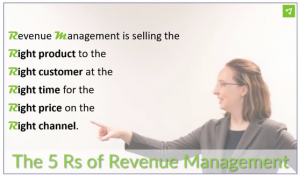
RevPAR projections for 2020
- Asian Hospitality predicts that RevPAR will remain flat.
- Hotel News Now reports that both STR and CBRE show occupancy falling slightly and ADR showing a slight increase.

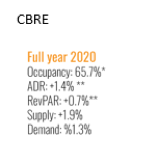
4 Expert Tips for profitable gains in 2020
- Evaluate your Channel management/distribution
With so many ways for a customer to book your hotel, it is important to understand the cost of each distribution channel. Not all guests book the same way, and the cost of each channel can vary.
Most popular channels
- Hotel Direct
- GDS (Global Distribution Solutions)
- OTAs (Online Travel Agencies such as Expedia and Booking.com)
If most of your business comes from the OTA channel, but has a cost of 20% associated with it, it might be beneficial to try gaining more direct bookings with lower cost acquisition.
A Profit Launch Assessment can evaluate how your business is booking and the cost associated with this business. This helps you determine your most profitable channels.
- Target the right audience
Determine who the ideal customer is for your hotel. This will help direct your marketing funds and price your hotel accordingly.
What types of customers stay at your hotel? What demographics define the types of customers you attract? Families? Couples? Multi-generational guests?
This is important because if, for example, your hotel is not popular with the more mature clientele, it might not make a difference that your AARP discount is 5% or 25%. Having this information available will help you accurately define your target market.
Where do your customers come from? Review your feeder cities to determine where you should be marketing. If most of your travelers are within a 5-hour driving radius of your hotel, it would be wise to target guests in that area. Perhaps offering a special rate for guests in the tri-state area or a specific zip code would be effective. If your hotel attracts guests from certain countries, you could have a few amenities that they would find beneficial.
Booking windows also vary based on clientele and feeder cities. Knowing when each type of business books can help determine the most profitable business to attract and the best time to promote different types of business.
On your website, increase conversion by highlighting the attributes of your hotel that will appeal to your ideal customer. If your hotel attracts families that are in the drive-in market, you could promote parking, family activities in the area, breakfast or other options that would appeal to families when they stay with you.
- Create an unconstrained demand forecast
Unconstrained Demand forecast looks at how many rooms you could sell if you had unlimited inventory. This is different from a monthly operational forecast.
To create an unconstrained demand forecast, consider how many rooms you have sold on a specific date, and how many rooms you could sell for that date. Creating a demand forecast for the year will help determine a marketing calendar to maximize the return on marketing dollars spent. This also helps synergize revenue management and marketing so they are working together to create a unified plan.
How to use the information in your unconstrained demand forecast
- Determine when you have opportunity to increase rate or eliminate discounts.
- Find dates that may need more assistance and possibly target specials to help increase demand.

- Shop your competition
When was the last time you shopped your competition? If you haven’t evaluated this in the past 6 months, you might be losing out on revenue opportunities. Looking at each of your competitors on their brand sites, the OTA sites and Trip Advisor will help you understand what they are doing, and how guests are reacting to them.
Each hotel should have a list of the following regarding their competitors:
- what amenities they have at the hotel
- what specials they have in place each day
- who their top accounts are
This should be updated regularly, at least twice a year or as you notice a shift in your business.
Reading your competitors’ guest reviews will help you determine how to sell against them as well as provide insight to what is happening at that particular hotel. what is happening at that particular hotel.
Who, How, Where, When & Why of 2020
Whether 2020 proves to be a challenging year or smooth sailing, properties need to utilize every tool available. If used properly and frequently, your hotel will stand above the rest. Narrowing down who your customer is, how they are booking at your hotel, where are they coming from, when are they coming and why they should choose your hotel are great steps in helping your hotel gain share over the competitors.
By Jennifer Koll
Brand Systems Manager, Total Customized Revenue Management, LLC.
That Nasty “R” Word
As 2019 comes to a close and a decade of economic growth and prosperity in the U.S. Hotel Industry is documented in the history books, the industry is looking for clues that foreshadow the beginning of a new decade. Without a crystal ball to rely on, experts look to trends and economic indicators for signs.
Portent of doom
At the 2019 Hotel Data Conference in August, there was lively speculation about an economic slowdown – a downturn. Dare we even foretell a full-on recession in 2020?
The economic expansion the United States has enjoyed was already long in the tooth.
The bull market on Wall Street was in its record-setting 10th year.
There were signs of downward pressure from the global markets as trade wars, tariffs, and uncertainty about Brexit ruled the news cycle.
Then since HDC, the U.S. Hotel industry recorded two consecutive months of year-over-year RevPAR declines in September and October, and three months total in 2019 when we include June.
The speculation was certainly justified. However…
What a difference a month makes.
On December 18, 2019, STR released US Hotel performance for November, which showed positive year-over-year change. Although one month may not qualify as a trend, the news is positive. In November of this year, Occupancy, ADR, and RevPAR all increased compared to the year before. This was the first time since July. The first two weeks of December show continued growth in RevPAR over last year as well.
For the three-month period ending in November, however, the KPIs are still in the red, coming off the aforementioned declines of September and October.
 Source: STR
Source: STR
Is this a year-end storm brewing or a silver lining?
The announcement from STR came off the heels of other good economic news, including better than expected U.S. manufacturing output in November, as reported by CNBC. This was a reversal of three consecutive months of manufacturing contraction. Further making the case, short-term interest rates were kept steady by The Federal Reserve, a signaling of confidence by The Fed board that further economic stimulus isn’t necessary. Even more important, the economy is not “overheating” as was the concern in 2018 when The Fed increased rates four times to hedge inflation.
Unemployment remains at historic lows, a trade deal with China is imminent, and Congress passed the United States-Mexico-Canada Agreement (USMCA) trade agreement this week. This trade agreement has the potential to increase tourism to the United States, which is already the nation’s #2 “export”. Travel economists predict the USMCA will raise $1.7 billion in travel-generated economic output and create 15,000 jobs. That’s on top of the already $2.5 trillion and 15.7 million jobs supported by the US travel industry.
Finally, the consensus of Wall Street analysts is to expect that in 2020, corporate earnings will rise just over 10%. While this is a rosy picture indeed, even at half the consensus estimate, that is enough to keep the economy and financial markets moving in the right direction.
I make no claims to be an expert in economics, but I admit that I’m excited as 2020 approaches. While headlines focus on news of President Trump’s impeachment, the economy keeps chugging along, and the hotel industry is not yet ready to throw in the towel. Will growth of the U.S. Hotel industry be challenging in 2020? Most certainly, as supply and demand have reached equilibrium, and real ADR growth is not keeping pace with inflation. RevPAR growth will be stymied in some markets, and a slowdown in growth is very real. But does that spell Recession? It does not.
By David Beaulieu
Director of Client Services, Total Customized Revenue Management, LLC
Original Article:
https://www.tcrmservices.com/is-a-recession-coming/
December 20, 2019





